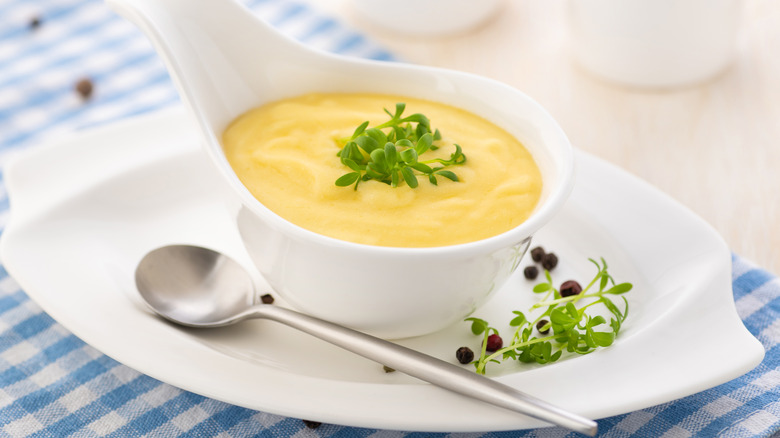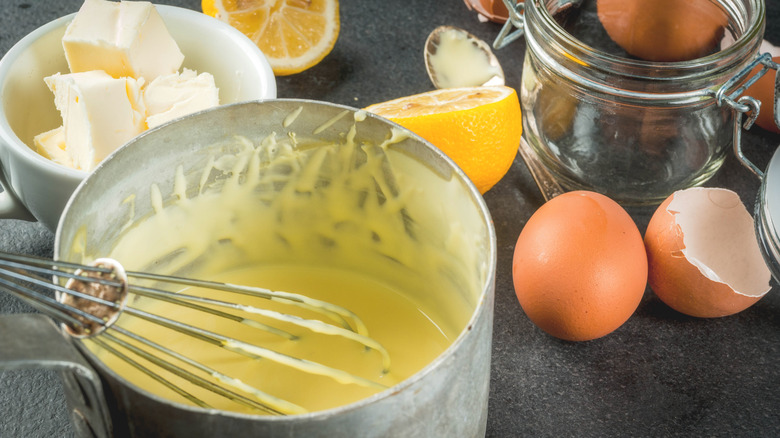How To Fix This Common Hollandaise Sauce Mistake
From the topping to the delectable eggs Benedict to a drizzle over asparagus, hollandaise sauce is a classic. Considered one of the five mother sauces of classic cuisine, the basic sauce is a starting point for a variety of other sauces (via Food52).
Made with clarified butter and eggs, it is considered an emulsified sauce. While the old phrase of oil and water do not mix might come to mind, an emulsified sauce combines those two liquids in such a way where they are suspended for a period of time (via Fine Cooking). But, without care, the sauces can "break," which means that the two ingredients that are not meant to come together separate. As anyone who has watched a food TV cooking competition knows, a broken sauce is a cooking don't.
A broken hollandaise can happen for a variety of reasons. The two most common problems are a temperature issue or improper whisking. If temperature is the cause for the separation, the Spruce Eats recommends "whisking a tablespoon of boiling water" into the broken sauce. The key to this method is to add a little water, just a drop at a time. If too much water is added too quickly, the sauce will be ruined. Through this method, the hope is that the warm, additional liquid with the vigorous whisking will help the sauce come back together.
If this method does not work, it might be time to crack another egg.
Can you save a broken hollandaise sauce?
Sometimes a dish screams for that perfectly golden, creamy hollandaise sauce. Even with care, that combination of clarified butter and eggs can separate. Before throwing everything out and starting over, one solution starts by cracking another egg. According to Fine Cooking, whisking another egg yolk into the broken sauce can be a solution. The added yolk changes the ratio within the sauce and can bring the broken sauce back together. But, remember to use only the yolk. A whole egg will only make a bigger sauce disaster. This sauce should be luscious and creamy, not a broken or curdled mess.
While many cooks make hollandaise through vigorous whisking on the stove, some cooking competitions show chefs making the mother sauce in a blender. Although vinegar or lemon (the acid component) can help add some stability to sauce, a blender can help to "whip" the sauce far more fervently than any hand whisking (via The Kitchn). For the home cook learning to master the sauce, the blender can be that secret hack. With a few pulses and the right ratios, that creamy, delicious sauce could earn rave reviews.
While the blender does not guarantee that the sauce will not break, it does remove that arm workout. But, if the goal is to work up an appetite, by all means get whisking.

